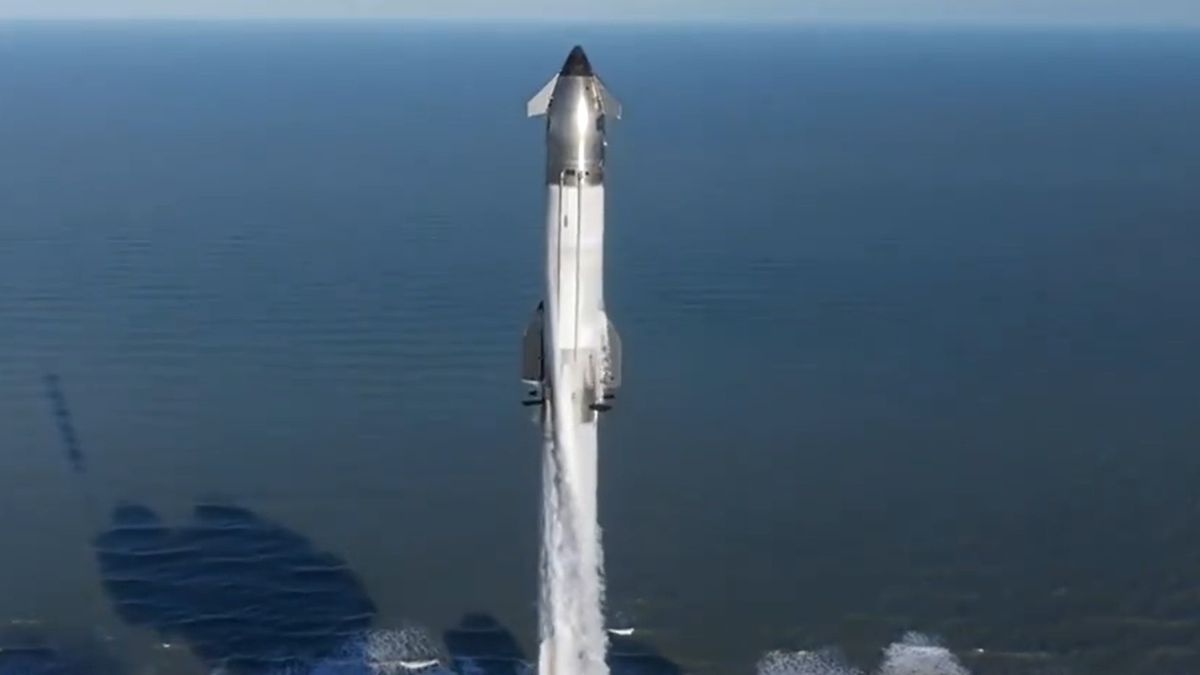
SpaceX has completed its investigation into the issues encountered during the seventh test flight of its Starship rocket, which concluded with a spectacular explosion.
On January 16, Flight 7 launched from Starbase in South Texas, successfully catching the massive first-stage booster, known as Super Heavy, using the launch tower’s “chopstick” arms as designed. However, the mission’s upper stage, referred to simply as Starship or “Ship,” was expected to deploy ten test satellites into a suborbital orbit and safely land in the Indian Ocean after approximately an hour. Unfortunately, the upper stage experienced an anomaly and disintegrated over the Atlantic Ocean, scattering debris over the Turks and Caicos Islands.
Just hours post-launch, SpaceX pinpointed a potential cause for the incident.
According to SpaceX founder and CEO Elon Musk, through a post on X, “Preliminary indications suggest there was an oxygen/fuel leak in the area above the engine firewall that generated pressure beyond the vent’s capacity.” This initial discovery was later confirmed and elaborated upon in a company update released on February 24.
In the update, SpaceX detailed that the primary cause of the loss of the Ship was due to a harmonic response that was significantly stronger during flight compared to ground testing, which resulted in heightened stress on the propulsion system components. This stress led to propellant leaks exceeding the ship’s attic area venting capabilities, ultimately causing sustained fires.
The attic area, as clarified by SpaceX, is an unpressurized section in the rear of Ship located between the base of the liquid oxygen tank and the heat shield. (Starship’s six Raptor engines utilize liquid methane and liquid oxygen.)
The resulting fires “eventually prompted all but one of Starship’s engines to execute controlled shutdown sequences, ultimately leading to a loss of communication with the vehicle,” SpaceX stated in their update.
Contact loss occurred approximately 8.5 minutes into Flight 7, with the Ship’s flight termination system activating autonomously a few minutes thereafter, as designed, resulting in the vehicle’s disintegration.
SpaceX has implemented measures to reduce the likelihood of a recurrence in future Starship launches, as noted in their update.
As part of these efforts, the company conducted a 60-second “static fire” test for the Ship vehicle designated for the eighth test flight, which could potentially take place on February 28.
The results from this extended engine firing have informed modifications to the fuel feed lines for the vacuum engines, adjustments to propellant temperatures, and the establishment of a new operating thrust target for the upcoming flight test, as stated by SpaceX.
To further combat potential flammability in the attic section of Starship, the company is adding additional vents and a new purge system utilizing gaseous nitrogen to enhance safety against propellant leaks. Future iterations of Starship will also feature the Raptor 3 engine, which will reduce attic volume and minimize the number of leaking joints in this area.
SpaceX led the investigation into the Flight 7 anomaly with oversight from the U.S. Federal Aviation Administration (FAA) and collaboration from NASA, the National Transportation Safety Board, and the U.S. Space Force. The company is coordinating with the FAA to finalize the investigation and secure a “flight safety determination” in anticipation of launching Flight 8 this Friday.









